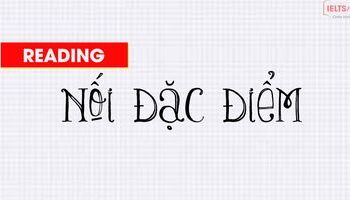Trong thời gian nghiên cứu IELTS cũng như giảng dạy IELTS cô nhận thấy một điều lỗi ngữ pháp trong bài viết IELTS chính là nguyên nhân thường xuyên các bạn mắc phải khiến nhiều bạn không vượt qua số điểm 6.0 writing.
Lời khuyên: Nếu muốn đạt điểm IELTS 7.0 hoặc cao hơn nữa các bạn cần phải cố gắng khắc phục làm cho hơn một nửa số câu của bài viết của mình hoàn toàn không bị lỗi. Vì vậy, các thầy cô tại IELTS Fighter đã liệt kê 10 lỗi ngữ pháp phổ biến các bạn hay mắc phải cùng cách khắc phục để giúp các em có thể biết cách sửa lỗi sai nhé.
1. Sử dụng “the”:
Dùng “the” đúng:
- Khi chỉ nhắc đến 1 thứ duy nhất trong hoàn cảnh cụ thể: the government, the police, the bridge, the river, the hospital.
- Khi chỉ về một thứ duy nhất trên thế giới: the internet, the environment, the ozone layer, the atmosphere
- Số đếm: the first, the second, the third.
- So sánh nhất: the worst, the shortest, the lowest, the most beautiful, the least impressive.
- Dùng trong tên chỉ nhóm khu vực/ tổ chức: the USA, the UK, the Maldives, the Middle East, the United Arab Emirates, The United Nation...
- Trước danh từ mô tả sự vật: exercise is good for the body, the motorbike is the most common form of transport in Asia, the role of the teacher has changed in recent years.
- Trước danh từ mô tả tình huống, quá trình, sự thay đổi: over the years the development of the town accelerated, the frequency of violent crime decreased over the period, the improvement in living standards.
Không sử dụng “the”:
- Khi nói về những thứ chung chung chúng ta bỏ “the” và sử dụng số nhiều: dogs don’t like cats, people with dyslexia have reading problems, Japanese cars are very reliable, German products are very high quality.
- Một nơi duy nhất hay quốc gia: Ireland, China, Vietnam, Europe, South America.
2. Danh từ đếm được và danh từ không đếm được.
Một số danh từ trong tiếng anh không đếm được nên sẽ luôn ở dang số ít. Dưới đây là danh từ mà ứng viên hay sử dụng sai trong kỳ thi IELTS:
- Advice
- Shopping
- Travel
- Entertainment
- Happiness
- Literature
- Work
- Research
- Traffic
- Advertising
- Food
- Information
- Knowledge
- Education
- Money
Danh từ không đếm được bạn sẽ không thể sử dụng trong các trường hợp sau:
- a plural verb:There were many traffic in the city.
- a number:three advice, four food
- a few, a couple, many, a number of:a number of literature, a few research
- a/an:a happiness, an entertainment
3. Đồng nhất danh từ và tính từ
Nếu bạn sử dụng một danh từ số nhiều bạn phải sử dụng động từ số nhiều và ngược lại:
Example:
- There is some dogs outside.
- There is some food in the kitchen.
- Here are some homework for you.
- There are some eggs in the kitchen.
4. –ing or to + infinitive
Sử dụng to + infinitive verb sau các động từ: earn how, would like, want, seem, refuse, promise, prepare, offer, learn, hope, help, deserve, decide, afford, and ask.
* Example:
- It is important to learn how to speak English
- Most people cannot afford to go on holiday every year.
- I would like to study overseas.
* Lưu ý: “like” có thể dùng được với ing or to + infinitive.
Sử dụng verb-ing sau động từ: suggest, recommend, practice, mind, keep, involve, imagine, give up, finish, enjoy, deny, consider, carry on, and avoid.
* Example:
- I would recommend checking your writing for mistakes.
- You should avoid drinking coffee after 6pm.
- I’ve finished writing my essay.
5. Sử dụng mạo từ trước cụm danh từ.
Dùng a/an trước một cụm danh từ có tính từ đi kèm: a massive improvement, a steady increase, an overall majority, a very small percentage, a really strong argument.
6. Sử dụng dấu “ , “
Trong IELTS writing chúng ta thường sử dụng cụm từ nối như : however, for example, nevertheless, firstly, secondly, in conclusion, in summary. Vì vậy, cần phải sử dụng dấu “,” sau một cụm từ nối.
- Firstly,the main cause of pollution is motor vehicles.
- On the one hand,motor vehicles are said to be the main cause.
- However,pollution from industry may also be to blame.
- To sum up,the causes of pollution are mostly man-made.
7. Các thì:
12 thì tiếng anh các bạn vẫn sử dụng "nhầm thì" trong câu:
- Hiện tại đơn
- Hiện tại tiếp diễn
- Hiện tại hoàn thành
- Hiện tại hoàn thành tiếp diễn
- Quá khứ đơn
- Quá khứ tiếp diễn
- Quá khứ hoàn thành
- Quá khứ hoàn thành tiếp diễn
- Tương lai đơn
- Tương lai tiếp diễn
- Tương lai hoàn thành
- Tương lai hoàn thành tiếp diễn
8. Giới từ đi sau tính từ và danh từ.
Nhiều bạn bị lẫn lộn trong khi dùng giới từ sau tính từ và danh từ. Dưới đây là giới từ sử dụng đúng trong những trường hợp:
At:
- Badat (something)
- Goodat (something)
- Surprisedat (something)
About or with:
- Pleasedabout (something)
- Pleasedwith (someone)
- Angryabout (something)
- Angrywith (someone)
- Disappointedabout (something)
- Disappointedwith (someone)
- Worriedabout (something or someone)
In:
- rise in
- decrease in
- increase in
- fall in
- drop in
Between:
- difference between
Of:
- advantage/disadvantage of
- example of
- number of
- percentage of
- use of
9. Dấu nháy đơn “ ‘ “
Sử dụng trong các từ rút gọn:
- Cannot-Can’t
- Do not- Don’t
- I will- I’ll
Một điều các bạn cần biết hững từ rút gọn bạn có thể dùng trong văn nói nhưng không được phép dùng trong IELTS academic writing.
Dấu nháy dùng trong chủ sở hữu:
- John’s book
- Mary’s brother
Không dùng dấu “ ‘ “ với đại từ sở hữu:
- The dog has brokenits
- The book is nottheirs it’s ours.
10. Sai lầm chính tả phổ biến
Một số lỗi chính tả phổ biến:
- to or too
- there or their
- though or through
- programme
- accommodation
- advertisement
- beginning
- business
- commercial
- country
- environment
- Wednesday
- February
- government
- occurred
- practice
Trên đây là 10 lỗi ngữ pháp thầy đã chia sẻ cho các em, hi vọng sẽ giúp cho em biết được mình có đang “mắc lỗi ngữ pháp” hay không? Và biết cách khắc phục để hướng tới mục tiêu 7.0 + writing nhé!





